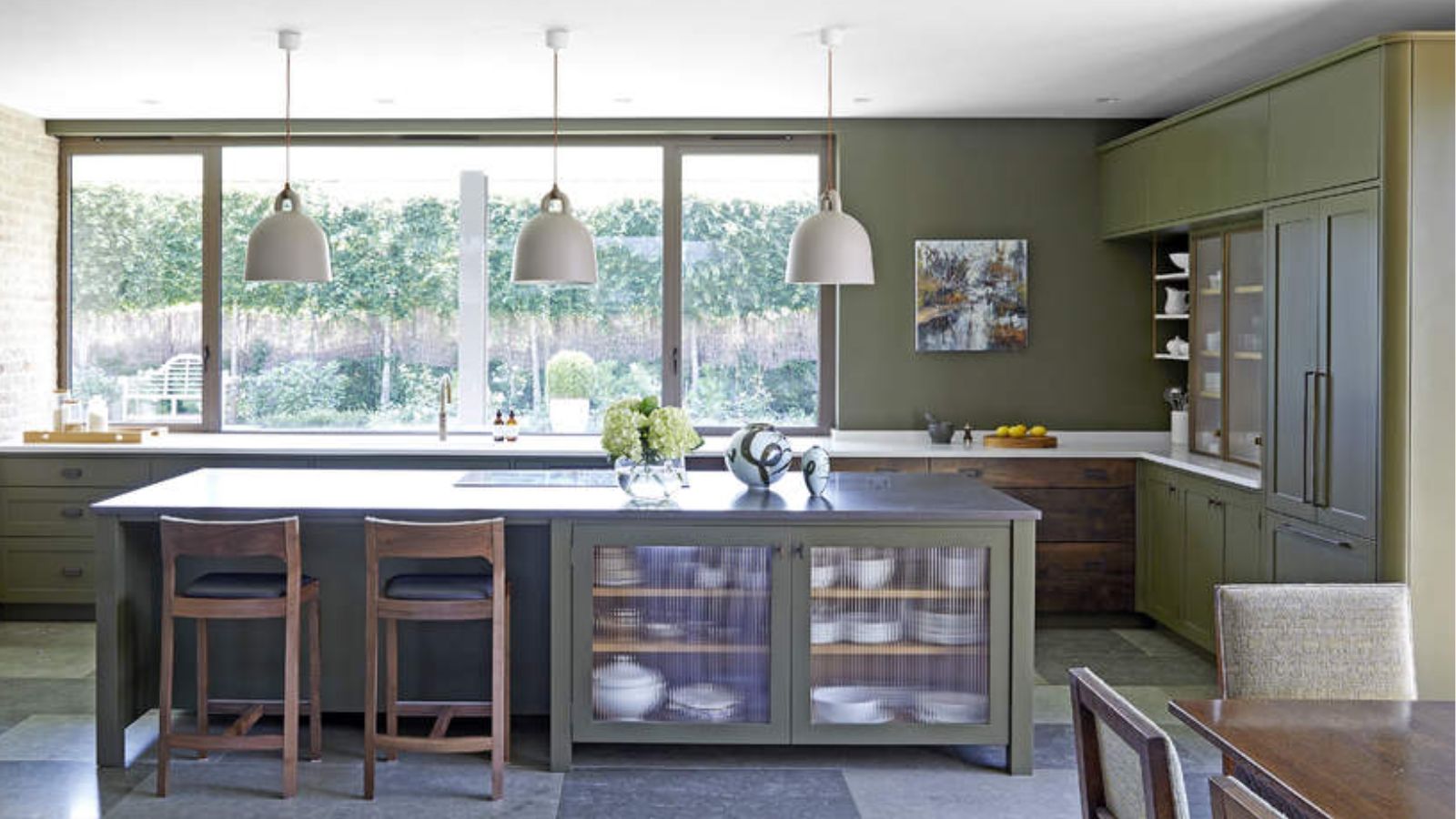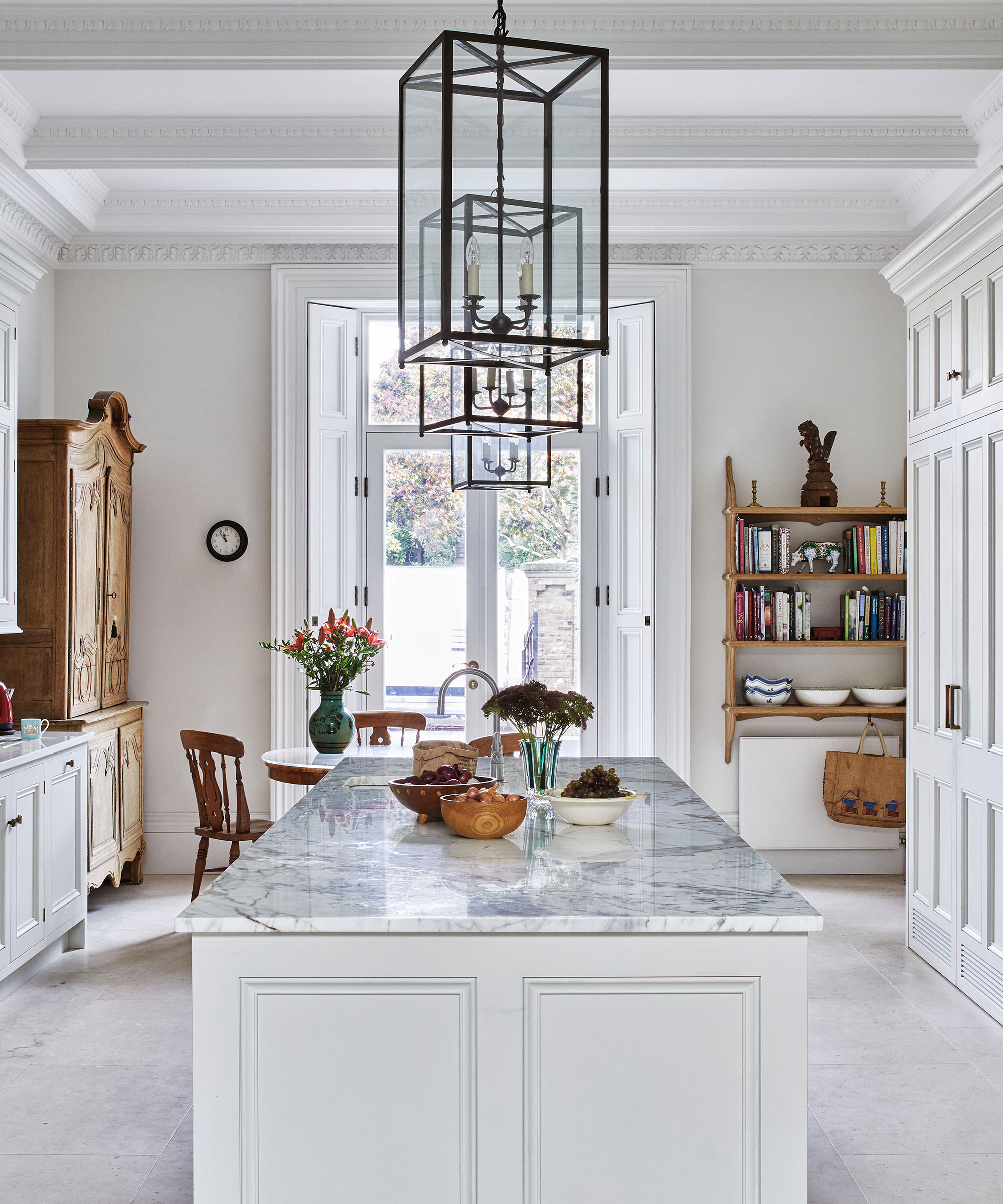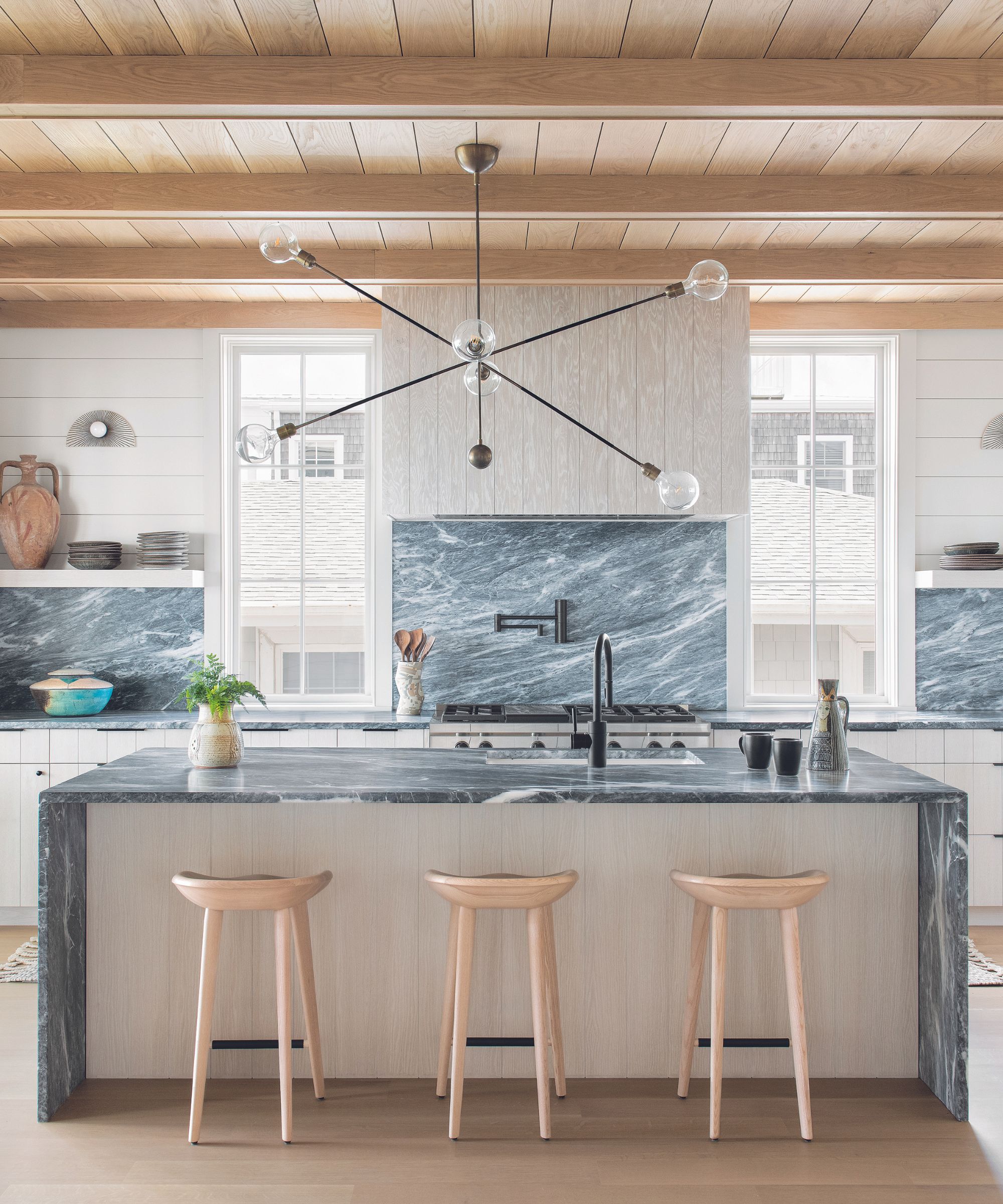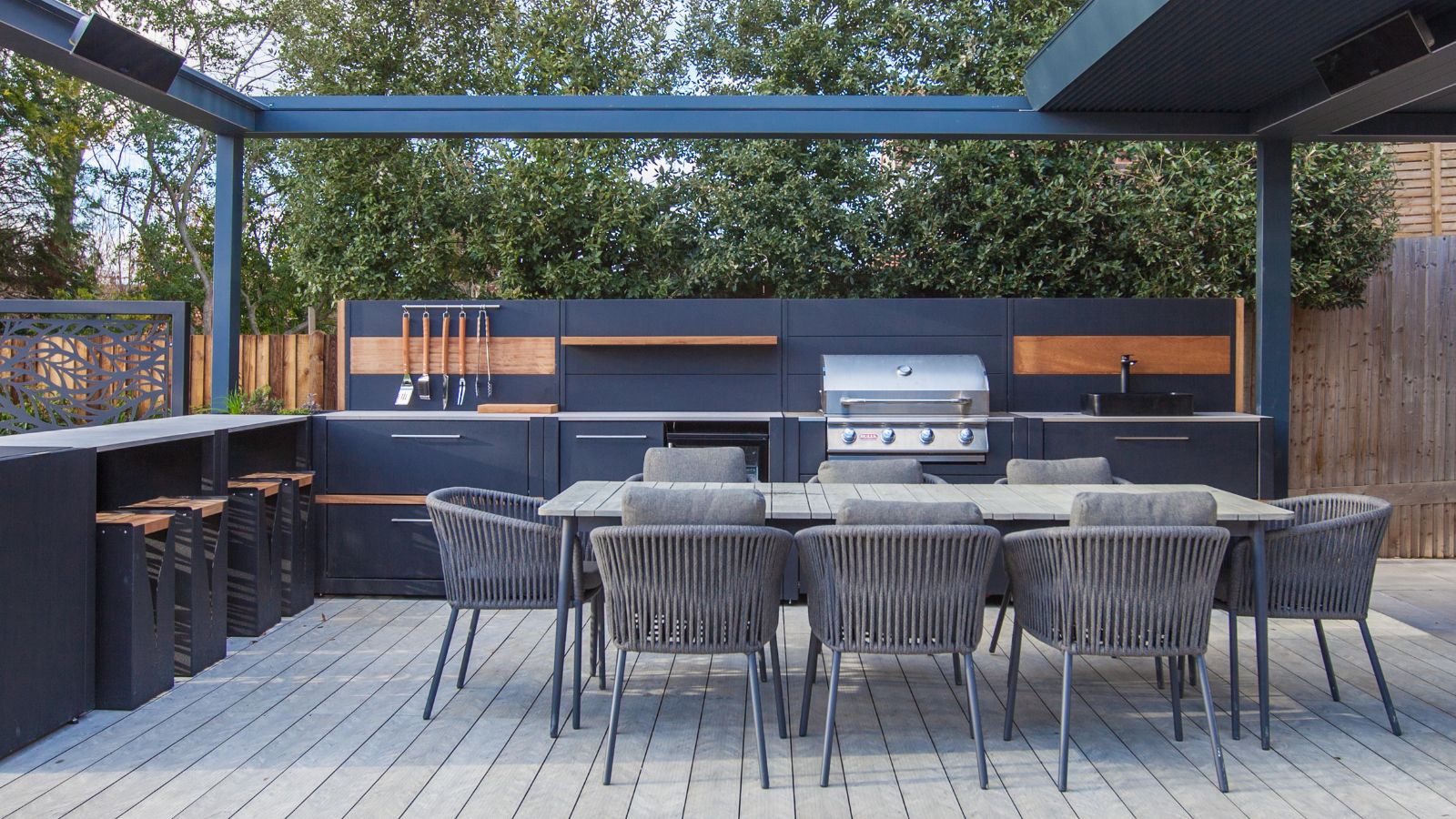Can you paint kitchen countertops? Our experts explain
The pros and cons of painting kitchen countertops and expert tips for a professional finish


You can indeed paint kitchen countertops to change the look of your kitchen without spending a lot of money, whether as a temporary or permanent change. But to make this a successful project, you definitely need the right approach.
While it's not suitable for all surfaces and homes, when done correctly, painted kitchen countertops can last for years and add tremendous value to a property.
This can be the ideal kitchen makeover to transform dated countertops to a revitalized and fresh surface for just a few hundred dollars instead of the thousands a full renovation may require. Using paint on countertops is also a popular idea with renters as a non-permanent but bold way to decorate that is landlord-approved.
Here is all the information you need to determine whether this is the right option for you as well as how to properly prepare for and execute this project.
Can you paint kitchen countertops?
This can be a great option that allows for a lot of creativity and personalization, however, you must first determine whether painting your kitchen countertops is a viable option. You should consider the hazards of this DIY project, such as potential countertop damage, and the necessity for proper preparation. If you decide to go ahead, planning is essential.
Pros and cons

Pros: Painting your kitchen countertops is cost-effective, customizable, and a quick way to update your kitchen without replacing it.
'Painting is significantly cheaper than replacing countertops, making it a good option for those on a budget,' says Cesar Garcia, CEO of Veritas Buyers.
'With a wide range of colors and styles, painting allows you to create a customized look that complements your kitchen design.
'Also, depending on the type of paint and surface, some countertop painting projects can be tackled by DIY enthusiasts.
'It can be temporary, so if you're unsure about a permanent color change, painting is a reversible option.'
'The best part lies in the ability to simulate different finishes,' adds Aaron Green, owner of Essential Home & Garden. 'For instance, you can achieve a granite-like appearance with a faux granite paint or even a stainless-steel look using a satin-finish, gray-blue metallic paint.'
Cons: 'Painted countertops are not as durable as other materials like granite or quartz and may chip or scratch more easily,' says Cesar Garcia.
'Painted surfaces require more regular cleaning and maintenance to prevent damage.
'Additionally, not all countertops are suitable for painting. Laminate and tile are generally good candidates, while granite and marble are not.
'There is the potential for poor results if the painting is not done correctly.'
Additionally, heavily used or constantly wet surfaces may not hold the paint over time. It may not withstand heavy impacts, and extreme heat can affect the finish.
Tips for success

Key to successfully painting your kitchen countertops is choosing the right paint, ensuring your countertop surface is suitable for painting and inspecting it for any imperfections before going ahead.
1. Choose the right paint
'It is essential to select the right type of paint for painting. Countertops are subjected to a lot of strain; thus, you must use paint that was specifically formulated for such surfaces,' explains Paul Murray, owner and founder Pro Painters Guide. 'Opt for a high-quality, epoxy or acrylic-based paint specifically designed for countertops and provide resistance to water and heat.'
These paints are often formulated to withstand the daily wear and tear that kitchen surfaces endure.
'Always go with the manufacturer's recommended paint type and application method for your specific countertop material,' recommends Jonathan Faccone, founder of Halo Homebuyers. 'This will ensure that the paint adheres properly, providing a long-lasting finish.
'If you are unsure about the best paint to use, consult with a professional or do some research to find the most suitable option for your countertop material.'
2. Choose the right surface
It's important to note that not all countertop materials can be painted effectively, and certain surfaces are unsuitable for this type of makeover.
'Laminate and solid-surface countertops are generally more suitable for painting, as they provide a smoother surface for the paint to adhere to,' explains Arpit Jain, interior designer at McLine Studios.
'However, it's essential to note that certain materials, such as granite, quartz or marble, may not be suitable for painting due to their porous nature they won't adhere as well.'
Tips for achieving a professional finish
'Before diving headfirst into painting, it's crucial to assess the condition of your countertops,' says Linda Schroder, home expert and owner of Cash For Houses. 'Look for any cracks, chips, or major damage. If you find any such issues, they need to be addressed first.
'Repairing any damage before painting will ensure a smooth surface and prevent the paint from peeling or cracking in the future. It would be a shame to put in all the effort of painting only to have it ruined by underlying problems.'

1. 'Thoroughly clean and degrease the countertops. Use a mild detergent to remove any residue,' advises Karina Newman, home expert and owner of iBuyers. 'For tougher stains or grease, consider using a kitchen degreaser and a soft sponge to ensure a pristine surface.' We recommend this Citra Solv cleaner and degreaser, from Amazon.
2. Lightly sand the surface with fine-grit sandpaper, such as this one, from Walmart. 'The entails scrubbing the countertop and creating some texture to which the paint can stick before finishing with a quality coat,' says Paul Murray. 'Failure to do this will create a paint that flakes or peels off easily.'
Ensure you clean away the dust after sanding.
3. 'Choose a high-quality bonding primer suitable for the countertop material. Apply the primer evenly with a brush or roller,' advises Karina Newman. 'Make sure to cover the entire surface, and don't rush the drying process. Adequate drying time is crucial for the primer to create a strong bond with the countertop.
This step enhances paint adhesion and durability.
You can find this Bates paint roller at Amazon.
4. Choose a durable, high-quality paint designed for countertops. Consider water-based acrylics or specialty countertop paints.
'Using a quality brush or roller, apply the paint in thin, even coats. This technique helps prevent drips and ensures a smooth, professional-looking result,' says Karina Newman. 'Follow the recommended drying times between coats. Patience during this phase contributes significantly to the longevity of the painted surface.'
5. 'Apply a clear sealant or topcoat to protect the painted surface from scratches, stains, and heat damage. This extra layer provides durability and enhances the longevity of the painted countertop,' explains Arpit Jain.
Opt for a food-safe sealant for kitchen countertops.
FAQs
How can you make a painted kitchen countertop look more realistic?
'Consider incorporating creative techniques like stenciling or faux finishes for a bespoke touch,' recommends Alex Locklear, founder of NC Cash Homebuyers. 'You can also experiment with textures and patterns that can elevate the aesthetic, making a painted countertop a unique focal point in the kitchen.'
Additionally, different paints can simulate different finishes. 'You can achieve a granite-like appearance with a faux granite paint or even a stainless-steel look using a satin-finish, gray-blue metallic paint,' says Aaron Green, owner of Essential Home & Garden.
'Select a paint color that complements your kitchen's overall design and style,' recommends Dr. David Son from Kitchens Prod. 'Consider lighter shades to create an illusion of space or go bold with vibrant colors for a unique look.'
Remember, proper maintenance is key in preserving the appearance of painted kitchen countertops, so avoid using abrasive cleaners or harsh chemicals that may damage the finish. Instead, opt for gentle cleaning solutions and non-abrasive sponges or cloths when wiping down your counters. We recommend these UPSTAR microfiber sponges, from Amazon.
Sign up to the Homes & Gardens newsletter
Design expertise in your inbox – from inspiring decorating ideas and beautiful celebrity homes to practical gardening advice and shopping round-ups.

Lola Houlton is a news writer for Homes & Gardens. She has been writing content for Future PLC for the past six years, in particular Homes & Gardens, Real Homes and GardeningEtc. She writes on a broad range of subjects, including practical household advice, recipe articles, and product reviews, working closely with experts in their fields to cover everything from heating to home organization through to house plants. Lola is a graduate, who completed her degree in Psychology at the University of Sussex. She has also spent some time working at the BBC.
-
 Diane Keaton's living room is proof that 'symmetry in interior design' is far from dated – this concept is still ingrained in our philosophy, but there's a twist
Diane Keaton's living room is proof that 'symmetry in interior design' is far from dated – this concept is still ingrained in our philosophy, but there's a twistSymmetry is a design trick used to create smart-looking spaces
By Jennifer Ebert
-
 How can you make an outdoor kitchen feel more luxurious? Designer tips on making this hardworking space extra opulent
How can you make an outdoor kitchen feel more luxurious? Designer tips on making this hardworking space extra opulentDiscover the strategies the experts use to give an outdoor kitchen luxury style
By Sarah Warwick